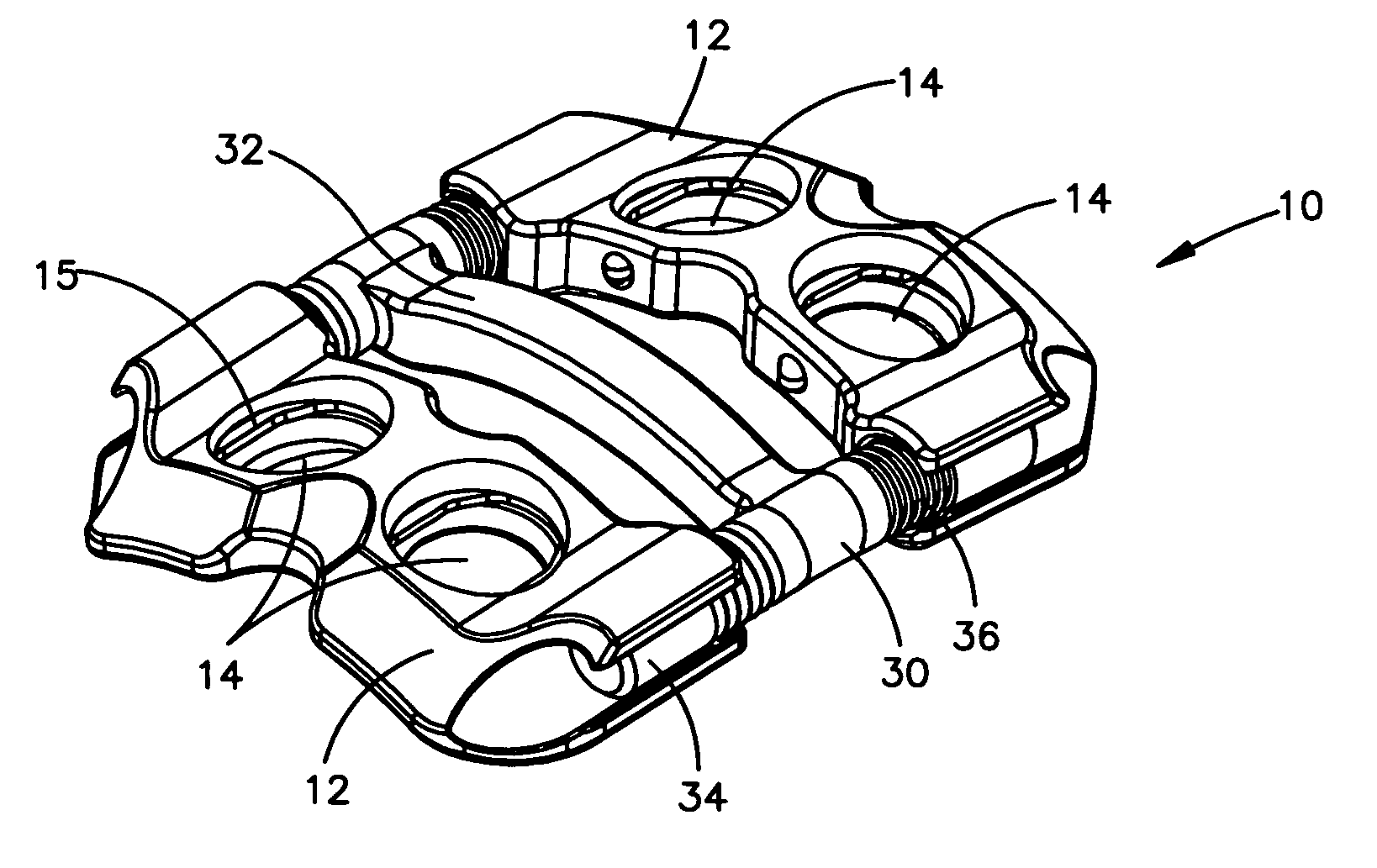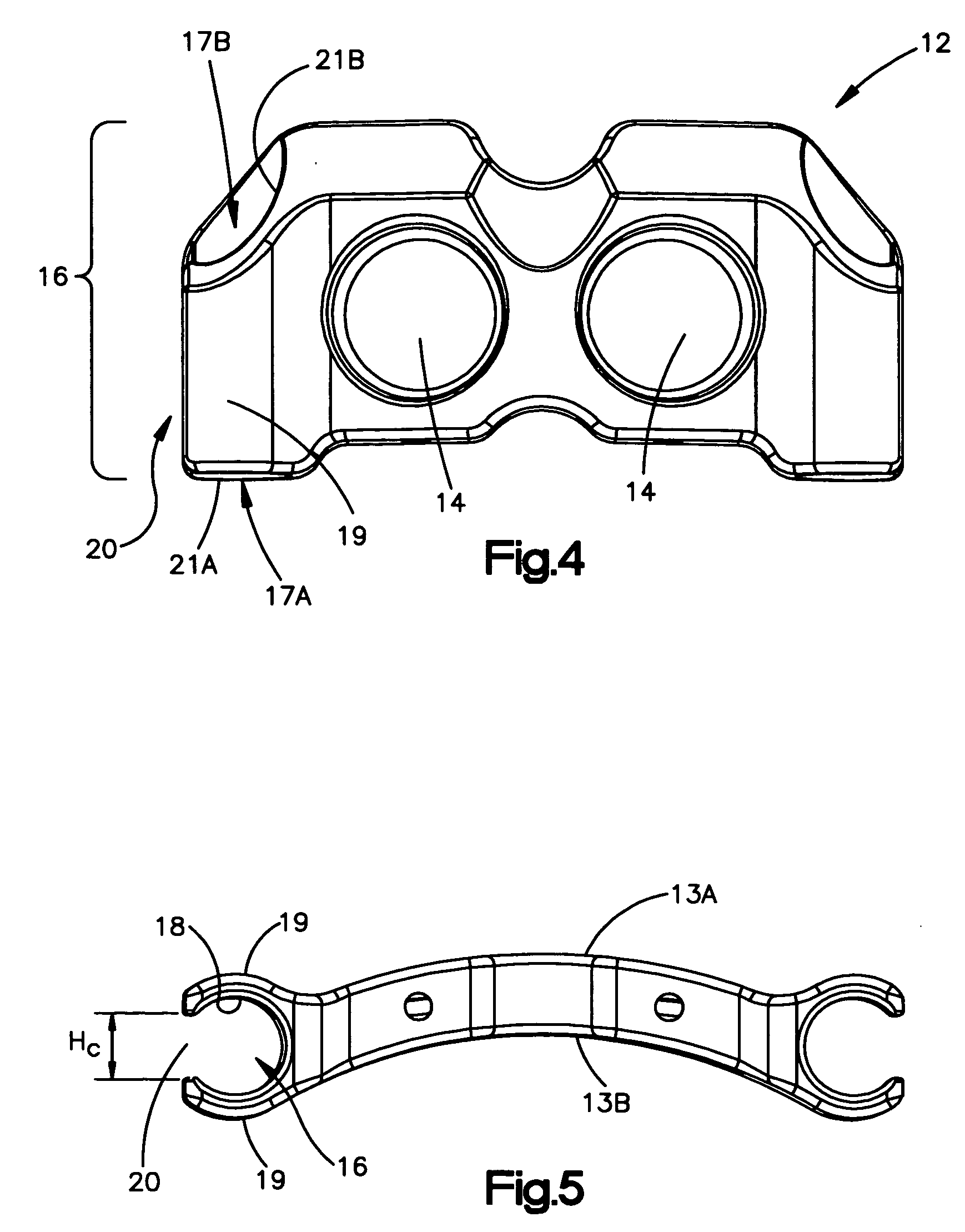Unidirectional fixation device
a fixation device and unidirectional technology, applied in the field of spine fixation devices, can solve the problems of increasing the attachment alternatives of the fasteners, subsidence may tend to shift more spinal load to the plate than the spinal load, and load shifting can occur
- Summary
- Abstract
- Description
- Claims
- Application Information
AI Technical Summary
Benefits of technology
Problems solved by technology
Method used
Image
Examples
Embodiment Construction
[0037] The system described herein may be used in spinal fusion procedures in which a damaged or diseased disc (or part of a disc) is removed from between a pair of vertebrae and a spinal fusion spacer is placed between the vertebrae. The carriage elements may be applied to an anterior portion of the affected vertebrae to span the affected disc space, and may be fixed to the vertebrae using bone fasteners. The system may function to maintain the vertebrae aligned during the initial period following fixation in which fusion of the spacer to the adjacent vertebrae occurs. The system may also function to share some of the axial spinal load applied to the fusion spacer to prevent extreme subsidence of the spacer into the vertebral body, such as where the patient has poor bone quality. The system may also act to prevent the spacer from being expelled from the disc space during the initial post-operative period.
[0038] The system may be used for single level (i.e. one-disc) or multiple-le...
PUM
 Login to View More
Login to View More Abstract
Description
Claims
Application Information
 Login to View More
Login to View More - R&D
- Intellectual Property
- Life Sciences
- Materials
- Tech Scout
- Unparalleled Data Quality
- Higher Quality Content
- 60% Fewer Hallucinations
Browse by: Latest US Patents, China's latest patents, Technical Efficacy Thesaurus, Application Domain, Technology Topic, Popular Technical Reports.
© 2025 PatSnap. All rights reserved.Legal|Privacy policy|Modern Slavery Act Transparency Statement|Sitemap|About US| Contact US: help@patsnap.com



